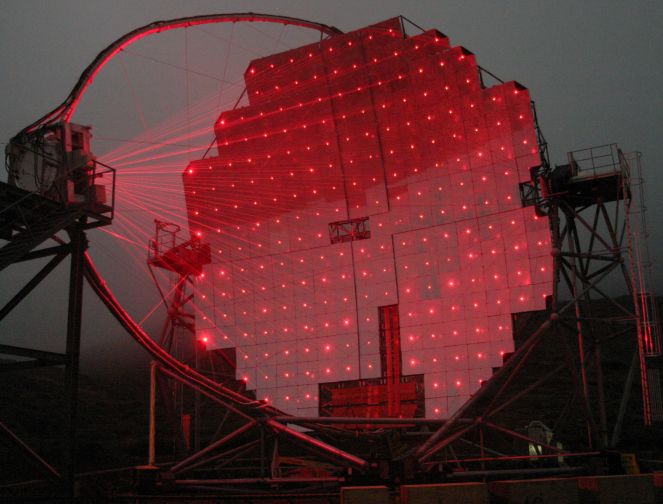Night MAGIC

Explanation:
Is it
magic?
On a rare foggy night, mysterious laser beams seem to play across the
MAGIC telescope at
Roque de los Muchachos on the Canary Island
of La Palma.
The lasers are actually part of a system designed to automatically
adjust the focusing of the inovative, seventeen meter wide,
multi-mirrored instrument.
The MAGIC
(Major Atmospheric Gamma Imaging Cherenkov)
telescope itself is intended to detect
gamma rays - photons with over 100 billion times
the energy of visible light.
As the gamma rays impact the upper atmosphere they produce air
showers of high-energy particles.
The MAGIC camera records
in detail the brief flashes of optical light,
called
Cherenkov light, created by the
air
shower particles that ultimately correspond to
cosmic sources of extreme gamma-rays.
While the MAGIC I telescope became operational this
year, the dramatic picture shows the nearly completed version
of the instrument in October 2003.
Authors & editors:
Robert Nemiroff
(MTU) &
Jerry Bonnell
(USRA)
NASA Web Site Statements, Warnings,
and Disclaimers
NASA Official: Jay Norris.
Specific
rights apply.
A service of:
LHEA at
NASA /
GSFC
& Michigan Tech. U.

